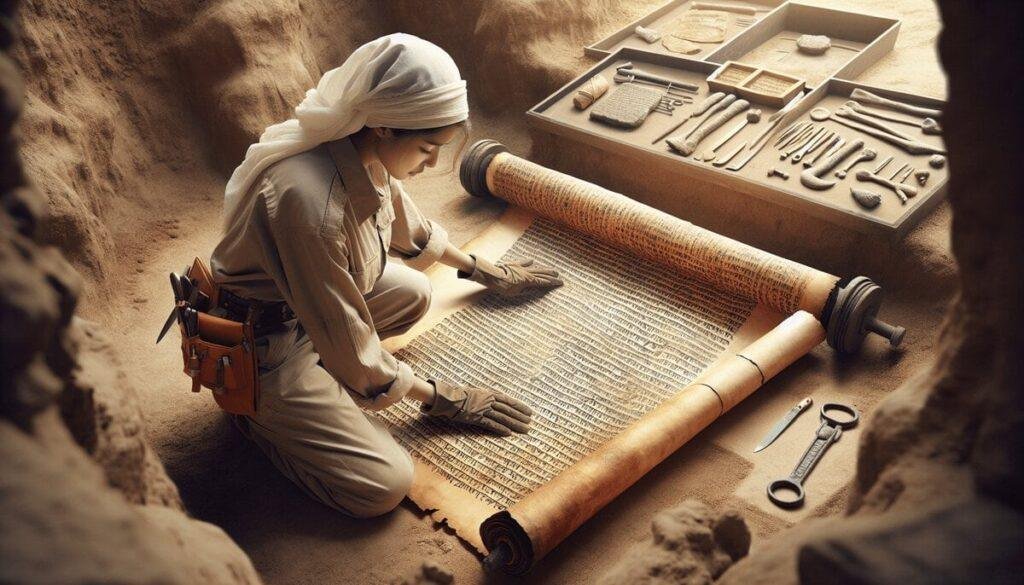In the vast landscape of historical exploration, biblical archaeology stands as a beacon shedding light on ancient narratives. But when did this journey truly begin, and what spurred its inception?
The origins of this fascinating discipline hold intriguing clues that reveal not just the past, but also the evolving nature of human curiosity and scholarly pursuit. By tracing the footsteps of those early pioneers, a clearer picture emerges, offering insights into the foundations of a field that continues to captivate minds and unravel mysteries buried beneath the sands of time.
Early Roots of Biblical Archaeology
The early roots of Biblical archaeology can be traced back to the mid-19th century in Europe and North America. During this period, there was a growing interest in exploring the ancient historical contexts of the Bible through tangible archaeological evidence. Early archaeologists were driven by a desire to unravel the cultural background and historical accuracy of the Bible by studying ancient artifacts and sites.
One key player in the funding and support of these early archaeological endeavors was the British Palestine Exploration Fund. This organization played an essential role in financing expeditions and research aimed at uncovering connections between the biblical narratives and the archaeological record. The fund provided resources for prominent archaeologists to conduct excavations in Israel, Palestine, and neighboring regions, where they unearthed artifacts and structures that shed light on biblical events and characters.
These early excavations not only focused on the lands directly tied to the Bible but also extended to regions like Egypt and Mesopotamia. Archaeologists found that exploring these neighboring lands was important for gaining a thorough understanding of the historical and cultural contexts in which the biblical stories unfolded. The discoveries made in Egypt and Mesopotamia provided valuable insights into the interactions, influences, and parallels between these ancient civilizations and the narratives found in the Bible.
Rise of Biblical Archaeology
Evidently, the rise of Biblical archaeology in the mid-19th century marked a significant turning point in the exploration of ancient historical contexts related to the Bible. This period brought about new methods and approaches to uncovering the past, shedding light on the historical narratives found in the Bible.
The 19th century saw a surge in archaeological expeditions to ancient sites in the Near East, particularly in Jerusalem and its surroundings. These excavations aimed to unearth evidence that could corroborate the events and people mentioned in the Bible.
The British Palestine Exploration Fund played an important role in supporting archaeological research in the region. This institution provided funding, resources, and expertise to scholars and archaeologists conducting fieldwork in biblical lands.
Excavations in Egypt and Mesopotamia also contributed significantly to the study of biblical history. Discoveries in these regions offered insights into the cultural interactions, trade networks, and historical contexts that shaped the world described in the Bible.
Key Figures in Archaeological Discoveries
With the rise of Biblical archaeology in the mid-19th century came the emergence of key figures whose excavations and discoveries greatly contributed to our understanding of ancient biblical sites and historical contexts.
Edward Robinson played a vital role in identifying biblical sites such as Beersheba, Hebron, and Shechem.
William Matthew Flinders Petrie, known for pioneering systematic excavation methods in Egypt and Palestine, greatly advanced archaeological practices.
Kathleen Kenyon revolutionized archaeological stratigraphy through her groundbreaking excavations at Jericho and Jerusalem.
Roland de Vaux led the excavation of Qumran, where the discovery of the Dead Sea Scrolls provided invaluable insights into ancient Jewish texts.
Yigael Yadin's excavation of Masada not only unearthed significant historical artifacts but also identified the site as a place of Jewish resistance against the Romans, shedding light on a pivotal moment in Jewish history.
These key figures not only unearthed physical artifacts but also contributed to the development of archaeological methods and the interpretation of biblical history, leaving a lasting impact on the field of Biblical archaeology.
Impact of Technological Advancements
Exploring the impact of technological advancements in Biblical archaeology reveals a transformative shift in surveying and excavation methodologies. Innovations such as remote sensing, GIS tools, ground-penetrating radar, drones, and 3D scanning have greatly enhanced the field in recent years.
- Remote sensing technologies have revolutionized archaeological surveys by allowing researchers to detect subtle variations in vegetation and soil that may indicate underground structures or features.
- GIS tools play an important role in mapping excavation sites and analyzing spatial data, providing archaeologists with a better understanding of the context in which artifacts are found.
- Ground-penetrating radar has become a valuable non-invasive tool for detecting buried structures and artifacts beneath the ground, helping researchers to pinpoint areas of interest for further excavation.
Furthermore, drones equipped with high-resolution cameras are utilized for aerial photography and site documentation, especially in challenging terrains. The use of 3D scanning and modeling techniques has transformed the visualization and preservation of archaeological finds, allowing for detailed digital reconstructions and analyses. These technological advancements haven't only improved the efficiency and accuracy of archaeological fieldwork but have also contributed to a deeper understanding of ancient civilizations through enhanced data collection and analysis methods in Biblical archaeology.
Modern Trends in Biblical Archaeology
The integration of interdisciplinary research designs and advanced excavation methodologies characterizes the modern trends in Biblical archaeology. Scholars are leveraging technological advancements such as remote sensing and GIS to enhance their understanding of archaeological remains. Recent excavations in Israel and neighboring countries are shedding new light on key biblical sites, uncovering artifacts that provide insights into the biblical narrative. Western and Israeli scholars are at the forefront of these excavations, employing meticulous excavation methods to guarantee the preservation and accurate interpretation of findings. Salvage excavations have also emerged as an essential tool in uncovering new information in biblical archaeology.
| Modern Trends in Biblical Archaeology | |
|---|---|
| Interdisciplinary Research Designs | Advanced Excavation Methodologies |
| Technological Advancements | Recent Excavations |
| Key Biblical Sites | Salvage Excavations |
| Meticulous Excavation Methods | |
| Archaeological Remains |


